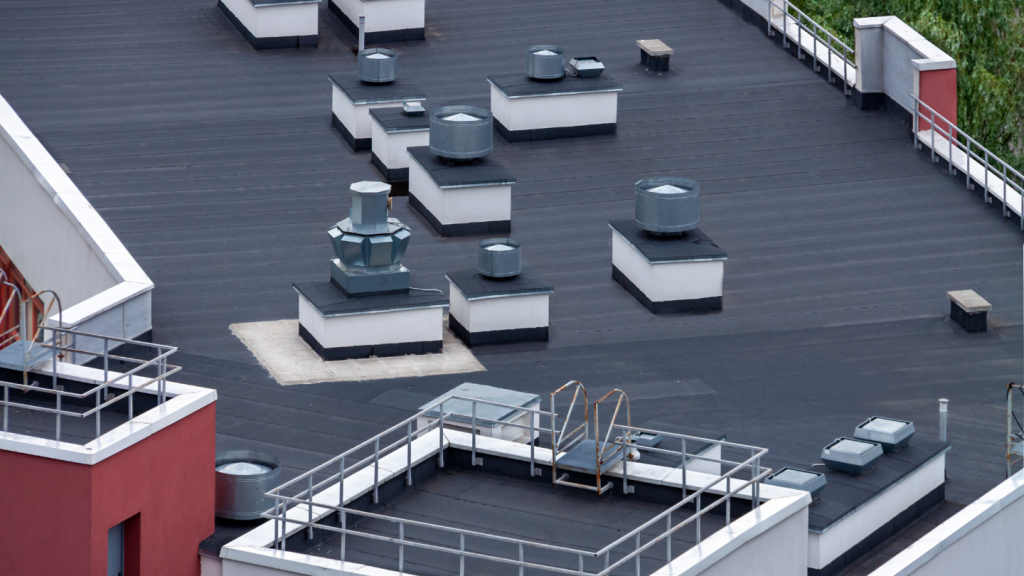Evaluating the Current Roof’s Condition: The initial step in a flat roof replacement project involves a thorough evaluation of the current roof’s condition. This assessment should identify signs of wear and tear, damage, or aging. Persistent issues such as leaks, pooling water, or visible damage are clear indicators that replacement might be more beneficial than repair.
Energy Efficiency Considerations: Today’s market offers various energy-efficient roofing materials that can help reduce heating and cooling costs. Selecting an insulated roofing system or a material with reflective properties can significantly impact the building’s overall energy efficiency. This not only contributes to cost savings but also aligns with sustainable building practices.
Effective Drainage Solutions: Proper drainage is a critical aspect of flat roof design. Unlike sloped roofs, flat roofs require well-planned drainage solutions to prevent water accumulation, which can lead to leaks and structural damage. This might involve installing internal drains, scuppers, or carefully designed slopes to ensure effective water runoff.
Budgeting for the Project: A comprehensive budget plan is crucial for any roofing project. It’s important to factor in not only the initial costs of materials and labor but also long-term considerations such as maintenance, repair needs, and potential energy savings. While opting for less expensive materials might seem cost-effective initially, investing in quality roofing systems often results in lower overall costs in the long term due to their durability and fewer repair needs.
Selecting a Skilled Contractor: The success of a flat roof replacement heavily relies on the expertise of the contractor. It’s imperative to choose a contractor with a proven track record in flat roof installations, one who understands the nuances of different roofing materials and possesses the skills to install them correctly. Their expertise is crucial in ensuring that the roof is installed properly, which affects its longevity and performance.
Understanding Warranties and Guarantees: Be well-informed about the warranties and guarantees offered with your roofing materials and installation. A solid warranty can provide peace of mind and financial protection against future problems. Understanding the extent and limitations of these warranties is essential in making an informed decision.
Compliance with Building Codes and Regulations: Ensure that your roofing project adheres to local building codes and regulations. This is not only a legal requirement but also a matter of safety and quality assurance. Compliance ensures that the roofing system meets the necessary standards and requirements set by local authorities.
Planning for the Timeline and Disruption: Finally, consider the timeline and potential disruptions that the roofing project might entail. For commercial buildings, this might mean planning the project during off-peak hours or seasons to minimize impact on business operations. For residential projects, understanding the timeline helps in preparing for any inconvenience during the installation process.
In conclusion, a flat roof replacement is a significant undertaking that requires careful planning and consideration. By meticulously addressing each of these key factors, you can ensure a successful, compliant, and effective flat roofing Chicago project that stands the test of time.
